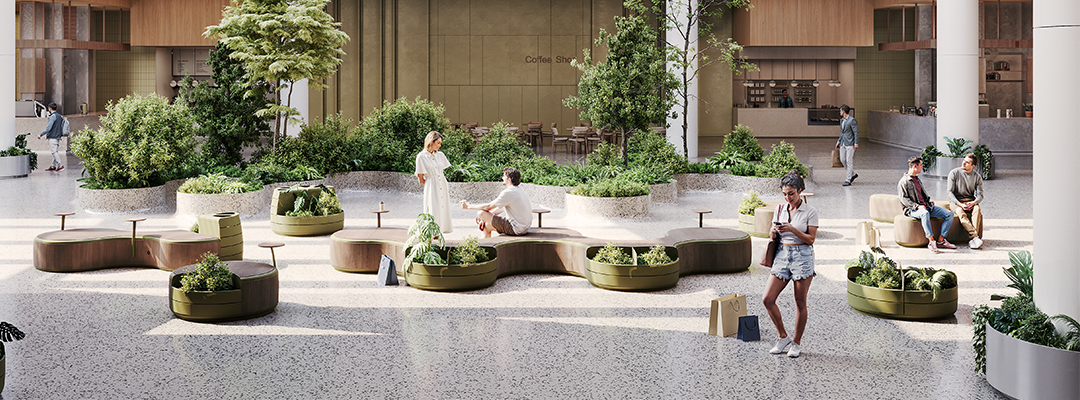Retail Consumer Experience: Evolving Expectations and Natural Spaces
The retail landscape has undergone a radical transformation. Shopping malls, once purely commercial destinations, are now evolving into multi-sensory, social environments, places where people go not just to shop, but to connect, unwind, and recharge. Today, the retail consumer experience is no longer just about products or prices. It’s about enhancing the customer experience and creating places that people want to be in.
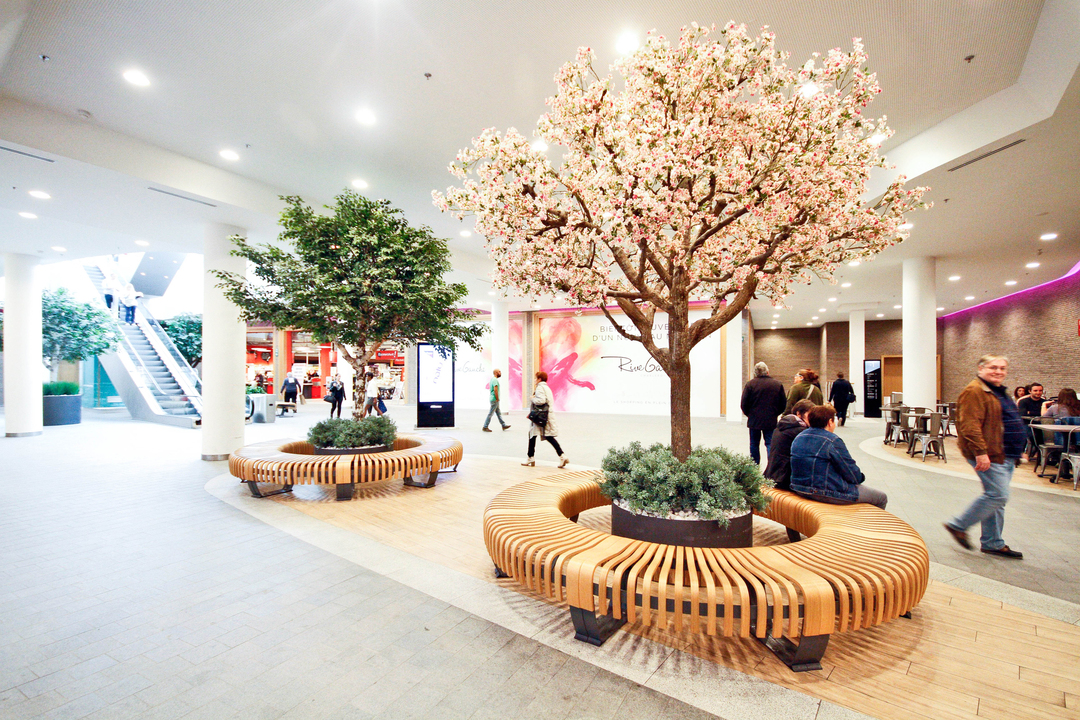
From shopping to socialising: The changing role of retail experiences
Malls have evolved from transactional hubs to experiential destinations. Besides heading to the mall to do daily errants, they are being more and more designed as holistic environments, where retail, leisure, entertainment, and even sustainability awareness are combined into one unified in-store experience (Champion et al., 2024).
Today, shared public areas, relaxing zones with greenery and more seating space draw people in. Visitors come for more than just shopping experiences; they want to socialise, browse, rest, and feel good in a space that meets their emotional and psychological needs.
Recent mall design trends emphasise livability, safety, flexibility, and sustainability (Çavka, 2023). Designers must now be aware to include comfort, wayfinding, and social interaction when designing to enhance customer experiences. The result? Malls are becoming less about consumption and more about community and atmosphere.
Shopping experiences: What visitors expect
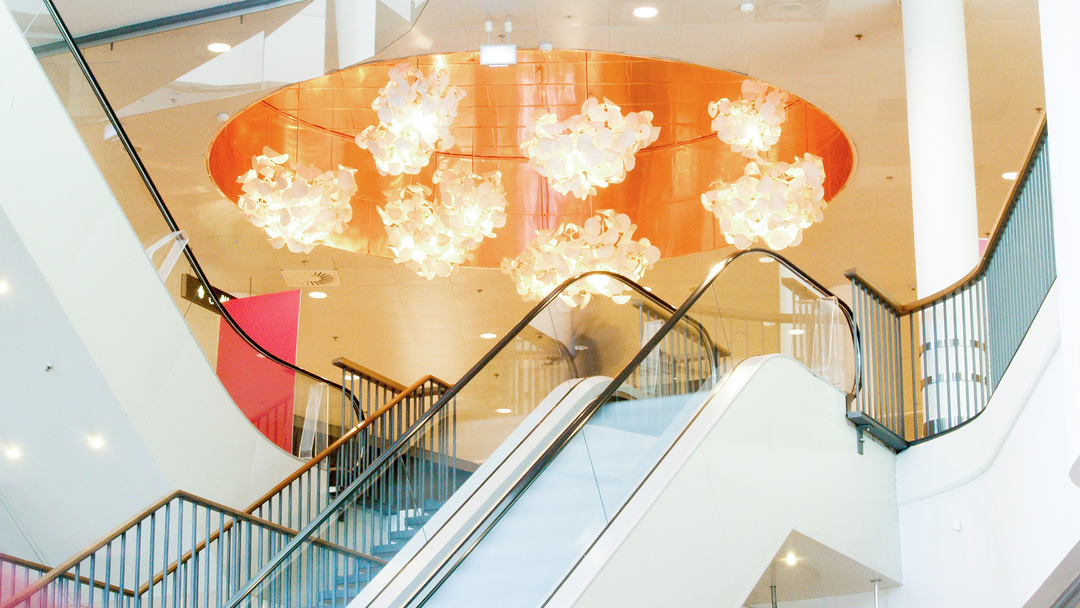
Today’s consumers expect more than just convenience. They seek shoppers experiences that feel effortless, emotionally rewarding, and safe. Their satisfaction on the entire shopping experience depends on factors such as ambience, accessibility, security, and the attitude of service personnel. In fact, a study has revealed that ambience was ranked as the most important factor influencing whether people return to the mall (Misra & Verma, 2023).
Besides environmental influences and practicalities, shoppers are also driven by emotional needs. They want to be able to relax, to explore, to engage. Many go to malls for fun, window shopping, or simply spending time with others. That is why, the the quality of the space besides its offerings has become a key factor to a mall’s success and enhancing customer focused experiences.
Customer focused experiences: How to engage consumers
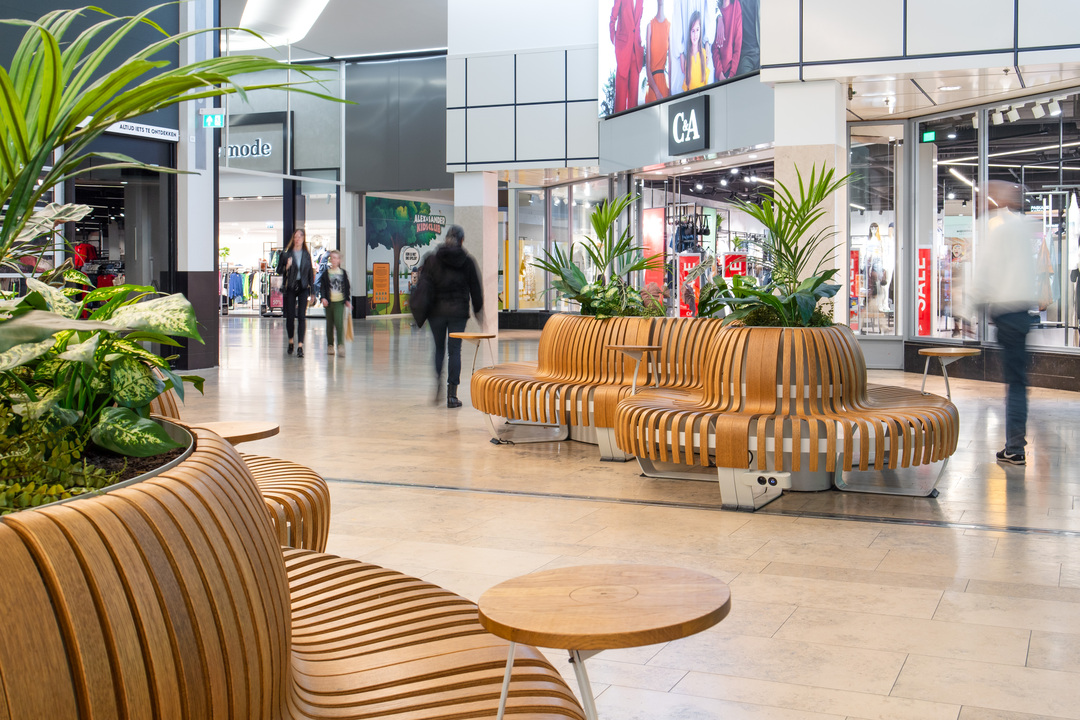
So, how can malls and retail spaces better meet these growing expectations on great customer experiences?
Environments that blend accessibility, emotional engagement, and functional design show the most potential in meeting expectations for great customer experiences. Research shows that aspects like spatial flow, natural lighting, inviting materials for a tactile feel, and interactive zones help enhance customer experiences and positively influence how visitor’s are thinking and behaving (Nasim & Shamshir, 2018; Sachdeva & Goel, 2015).
Good design encourages people to linger, engage, and return. That means shopping mall managers need to focus on areas that are easy to navigate and pleasant to spend time in. Comfortable seating areas, clear visual pathways, and cosy nooks shape a better in-store experience for visitors and invite them to rest or to mingle. The more immersive and human the environment, the stronger the emotional connection to the space and also the brand behind it.
Biophilic design: A natural influence on retail experience
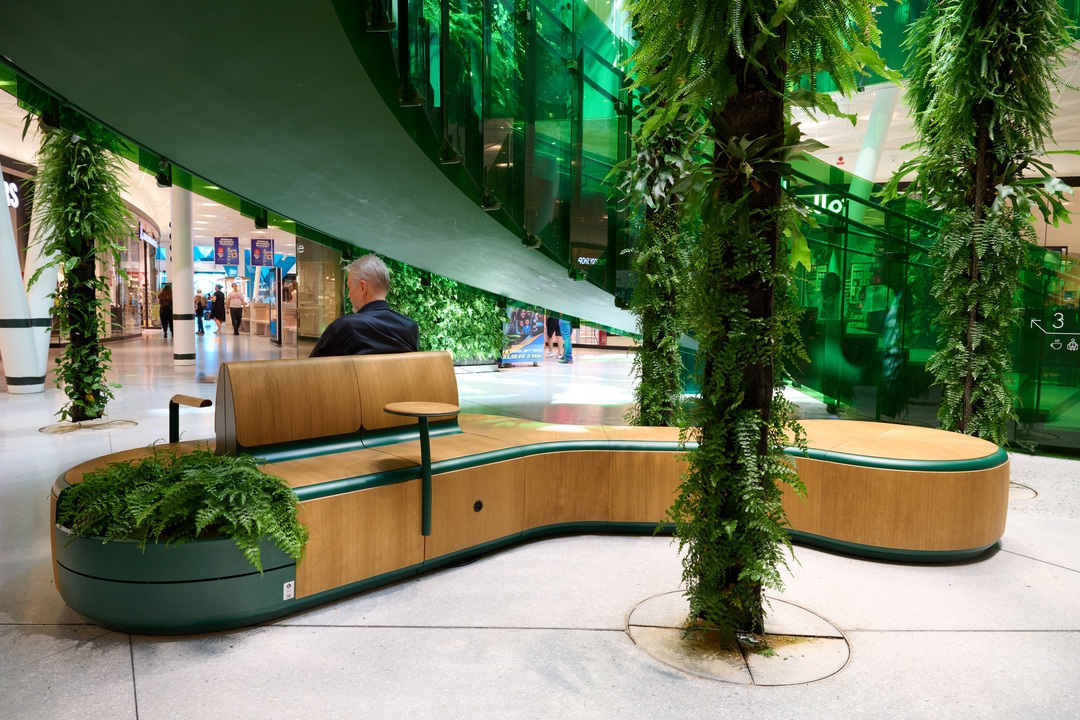
One of the most effective ways to enhance the retail consumer experience is through biophilic design. Biophilic design brings nature back into commercial spaces and in this way reconnects people with nature through architecture and interior design.
Studies have shown that green features in shopping malls, such as living walls, planters, natural materials, and flowing forms, improve retail customer experience, mental well-being, and visitors’ loyalty (Ortegón-Cortázar & Royo-Vela, 2023). The exposure to greenery can reduce stress, have a positive influence on mood, and even increase the likelihood that visitors return, often for longer stays (Champion et al., 2024; Tran et al., 2022).
By incorporating nature into retail environments, we can help turn everyday commercial settings into destinations where people want to be in and return to.
The future of retail consumer experience
As malls continue to evolve, the future of retail puts even more emphasis on designing customer experience, not just efficiency but also emotionally. During the last years, consumers have already been seeking multi-purpose destinations where they can do all, shop, socialise, eat, work, and relax. The trends show that this shift will continue to be even more important when designing customer experiences in order to differentiate one’s brand, engage visitors and enhance customer experiences.
Also in the next years, designers will increasingly embrace hybrid use spaces, freeform architecture, integration of greenery, and multisensory customer focused experiences. Mall design will put emphasis on the atmosphere and create a storytelling approach for places of meaning, not just for display. As Sachdeva & Goel (2015) noted, “Success at retail is less about what is being sold—and more about how it’s being sold.”
Hence, the most successful retail spaces will be those that feel good to be in, comfortable, engaging, and connected to the natural world.
Sources:
Çavka, H. B. (2023). An Investigation of Shopping Mall Design Requirements. Engineering Proceedings, 53(1), 42. https://doi.org/10.3390/IOCBD2023-16329
Champion, O. E., Sekene Anthony, B., & Okon, U. (2024). Evaluating the integration of innovative green spaces in shopping malls and its effects.
Misra, P. K., & Verma, A. (2023). Consumer Satisfaction in shopping mall: A Sociological study in context of shopping mall attributes. South Asian Journal of Social Sciences and Humanities, 4(5), 1-20.
Nasim, S., & Shamshir, M. (2018). Consumer behavior towards shopping malls: A systematic narrative review. Journal of Business Studies, 14(1), 81-95.
Ortegón-Cortázar, L., & Royo-Vela, M. (2023). The Effects of the Biophilic Atmosphere on Hedonic Value, Utilitarian Value, and Customer Loyalty. Sustainability, 15(23), 16435. https://doi.org/10.3390/su152316435
Sachdeva, I., & Goel, S. (2015). Retail store environment and customer experience: a paradigm. Journal of Fashion Marketing and Management, 19(3), 290-298.
Tran, I., Sabol, O., & Mote, J. (2022). The relationship between greenspace exposure and psychopathology symptoms: A systematic review. Biological Psychiatry Global Open Science, 2(3), 206–222. https://doi.org/10.1016/j.bpsgos.2022.01.004
